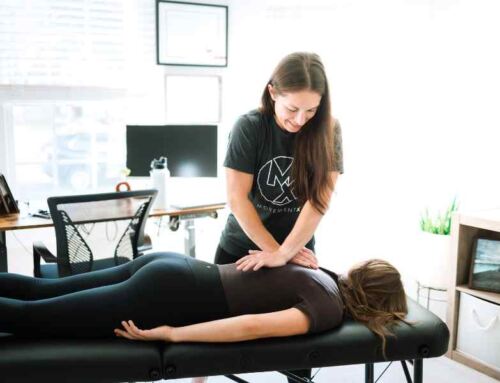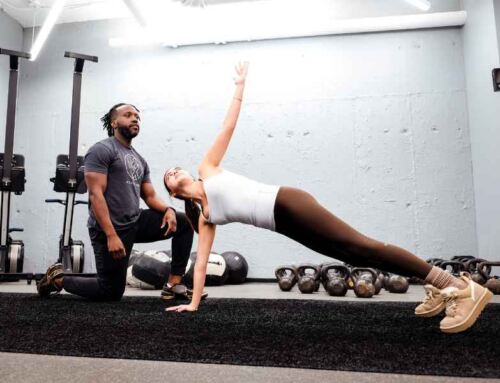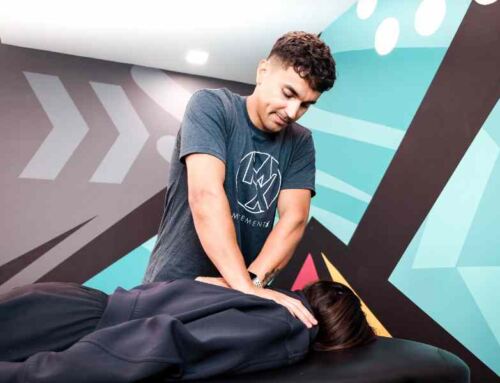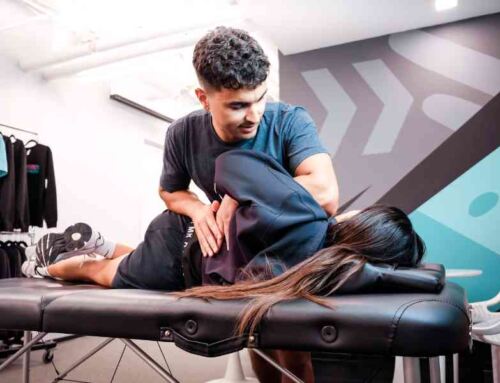5 Easy Neck Exercises for Everyday Relief
Do you often feel neck or shoulder tightness? You’re not alone. Neck stiffness can lead to neck pain, headaches, limited motion, and even discomfort in your jaw and arms, significantly affecting your daily life.
As a physical therapist, I’m here to share some effective neck exercises you can incorporate into your daily routine to help alleviate this tightness and improve your overall comfort. These exercises are designed to stretch and strengthen your neck allowing you to feel better and move more freely.
5 Neck Exercises to Relieve Tightness
Perform these exercises slowly and gently. You should feel a mild stretch. If you experience pain, stop and consult with your physical therapist.
1. Upper Trapezius Stretch
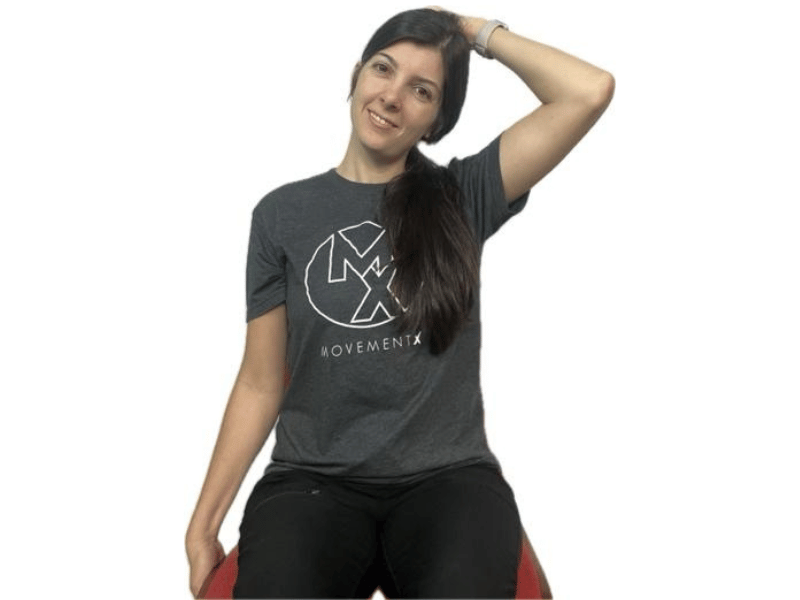
Purpose: Relieve neck tightness by gently stretching the upper trapezius muscles.
How to Do It:
- Starting Position: Sit in an upright position with your shoulders relaxed.
- Movement: Grab the bottom of your seat with your right hand to gently anchor your right shoulder down. Then, tilt your head to the left, bringing your left ear toward your left shoulder.
- Hold: Maintain this position for 30-60 seconds. Repeat 2-3 times.
- Switch: Slowly return to the starting position and repeat on the other side.
Tips: Keep your shoulders down throughout the stretch. You can gently deepen the stretch by placing your free hand on the top of your head.
2. Neck Flexion Stretch
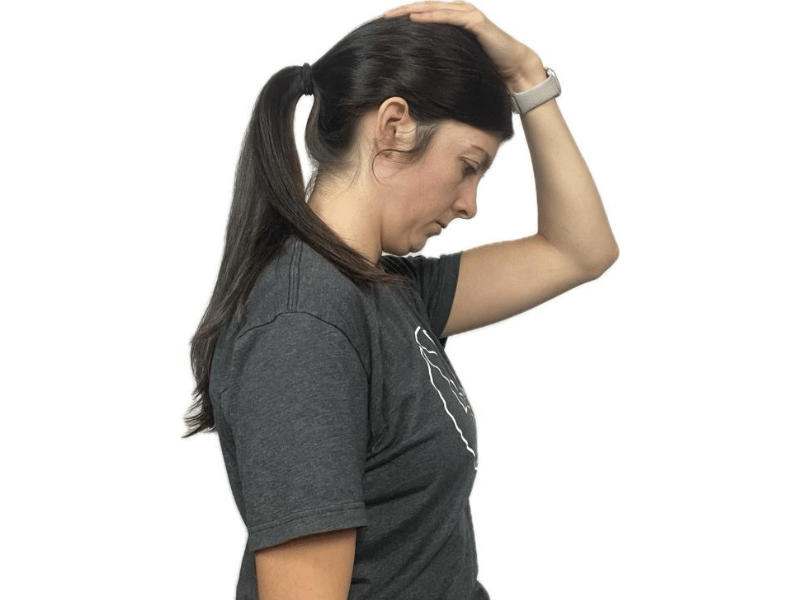
Purpose: Relieve tension at the back of your neck.
How to Do It:
- Starting Position: Sit or stand with a straight back.
- Movement: Gently tuck your chin toward your chest, aiming to stretch the muscles at the back of your neck. Use your hand on top of your head
- Hold: Maintain this position for 30-60 seconds. Repeat 2-3 times.
Tips: Avoid forcing your chin too close to your chest. Keep the stretch gentle and comfortable. If needed, use your free hand on the top of your head to deepen the stretch. Keep your shoulders relaxed.
3. Neck Rotation Stretch
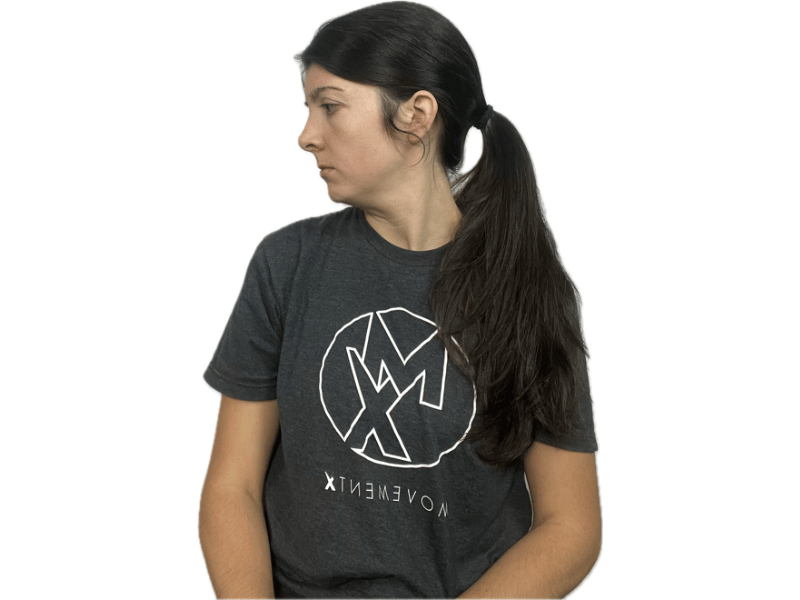
Purpose: Stretch the neck muscles and improve flexibility.
How to Do It:
- Starting Position: Sit or stand tall with your shoulders relaxed and good posture.
- Movement: Slowly turn your head to the right, bringing your chin towards your right shoulder.
- Hold: Maintain this position for 30-60 seconds. Repeat 2-3 times.
- Switch: Return to the starting position and repeat on the left side.
Tips: Move within a comfortable range of motion. Avoid any sharp or sudden movements.
4. Levator Scapula Stretch

Purpose: Stretch the levator scapulae muscles, which can contribute to neck and shoulder tension.
How to Do It:
- Starting Position: Sit or stand with good posture.
- Movement: Tilt your head forward and turn it slightly to the right, as if looking towards your right armpit. Use your right hand to gently apply pressure on the back of your head for a deeper stretch.
- Hold: Maintain this position for 30-60 seconds. Repeat 2-3 times.
- Switch: Return to the starting position and repeat on the left side.
Tips: Perform this stretch gently to avoid straining your neck.
5. Chin Tucks
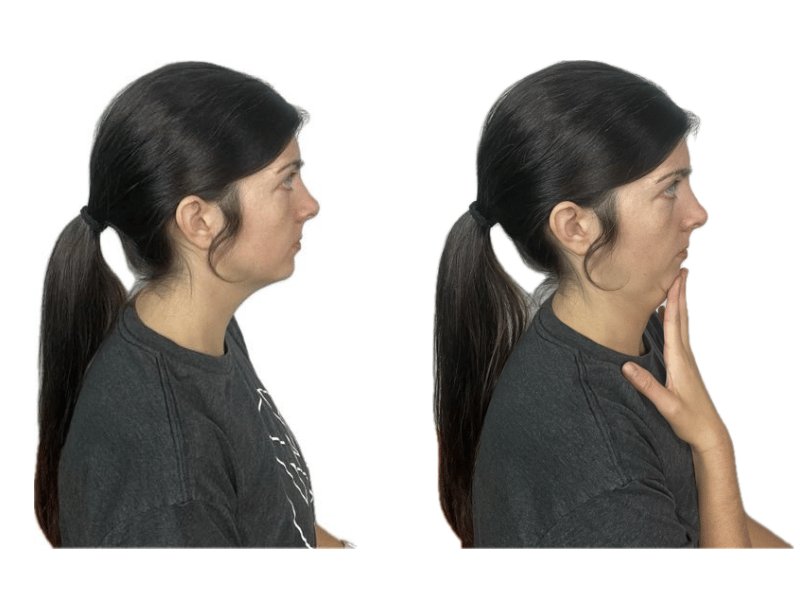
Purpose: Strengthen your neck muscles and improve posture.
How to Do It:
- Starting Position: Sit or stand with a straight spine.
- Movement: Gently tuck your chin toward your chest, creating a double chin effect.
- Hold: Hold this position for 5 seconds, then release.
- Repeat: Perform 10-15 repetitions, 2-3 times per day.
Tips: Move slowly and maintain a neutral spine during the exercise.
Additional Tips for Managing Neck Tightness
In addition to these exercises, here are some daily habits and strategies to help you manage and prevent neck tightness:
1. Prioritize Posture
Poor posture can be a major contributor to neck tension, especially if you sit for long periods. By making small adjustments to your daily routine, you can prevent strain and discomfort in your neck.
Take Frequent Breaks: If you work at a desk, set an alarm to remind yourself to stand, stretch, and move every 30 minutes. Our bodies are designed for movement, not prolonged sitting.
Workstation Ergonomics: Ensure your workstation is set up to promote good posture. Position your computer screen at eye level, with your lower back supported, and your arms at rest comfortably on the desk with elbows bent at 90 degrees. Consider using a standing desk or adjustable counter if you sit for long periods.
2. Stay Hydrated
Staying well-hydrated is essential for muscle function and overall health. Proper hydration helps prevent muscle cramps and tightness, including in your neck.
Water Intake: Staying properly hydrated is crucial for muscle function and can help prevent cramps and tightness. While there are general guidelines for water intake, it’s important to listen to your body and drink when you feel thirsty. Your hydration needs can vary from day to day. For instance, on hot days or after intense activity—especially if you’ve eaten salty foods—you’ll likely need more water than on cooler days when you’re less active and consuming more fruits and vegetables. Pay attention to these factors to determine your daily water needs.
3. Manage Stress
Stress can cause your muscles to tense up, especially in your neck and shoulders. By practicing relaxation techniques, you can reduce tension and promote better neck health.
Stress-Relief Techniques: Stress can cause muscle tension, so incorporate relaxation methods like deep breathing, yoga, or progressive relaxation to ease overall tension.
Balanced Lifestyle: Make sure you’re engaging in at least 30 minutes of physical activity 5 days per week, getting 7-9 hours of sleep per night, and making time for relaxation.
4. Get Regular Exercise
Consistent physical activity is key to maintaining neck and shoulder health. Strengthening and stretching your muscles will support better posture and prevent future tightness.
Strength and Flexibility Training: Strengthen your upper back and shoulder muscles to support your neck and prevent tightness. Incorporate full-body flexibility exercises to maintain muscle health. Unsure of which exercises are best for you? Connect with a physical therapist at MovementX for a personalized exercise plan.
Aerobic Exercise: Activities like walking, cycling, or swimming can reduce stress hormones like adrenaline and cortisol, helping to lower muscle tension. Plus, aerobic exercise triggers the release of endorphins—your body’s natural painkillers and mood elevators.
5. Keep It Consistent
One of the most important factors in managing neck tightness is consistency. By incorporating these exercises and strategies into your routine, you can prevent stiffness and improve long-term comfort.
Make it a Habit: To achieve the best results, make these exercises a regular part of your routine. Treat your exercise sessions like appointments—schedule them just as you would a meeting or doctor’s visit. Setting reminders can help ensure you don’t miss a session.
When to Seek Professional Help
If you find that these exercises are not providing the relief you need or if you experience persistent pain, feel free to reach out to Dr. Lauren Scott, physical therapist, at lauren.scott@movement-x.com or your healthcare provider for specialized help.
A physical therapist can offer a personalized treatment plan and address any underlying issues that may be contributing to your discomfort.
Conclusion
Managing neck tightness and discomfort requires a combination of targeted exercises, good posture habits, proper hydration, stress management, and regular physical activity. By consistently incorporating these simple neck stretches and exercises into your daily routine, you can alleviate tension, improve flexibility, and enhance overall comfort.
Remember, taking breaks throughout the day, staying mindful of your posture, and keeping your body hydrated are essential in preventing tightness from building up in the first place. In addition, practicing stress-relief techniques and engaging in regular physical activity will further support your neck health and overall well-being.
Consistency is key. Just like any health routine, the more regularly you practice these exercises and apply these tips, the better the results you’ll see. If you’re diligent and patient, you’ll experience reduced neck stiffness, greater mobility, and a noticeable improvement in your daily comfort.
If these strategies don’t provide the relief you need or you’re dealing with persistent pain, don’t hesitate to seek professional help. MovementX physical therapists are here to offer personalized support and guide you through a tailored treatment plan.
Start incorporating these tips and exercises into your routine today, and you’ll soon feel the benefits of reduced tension and improved neck health!


